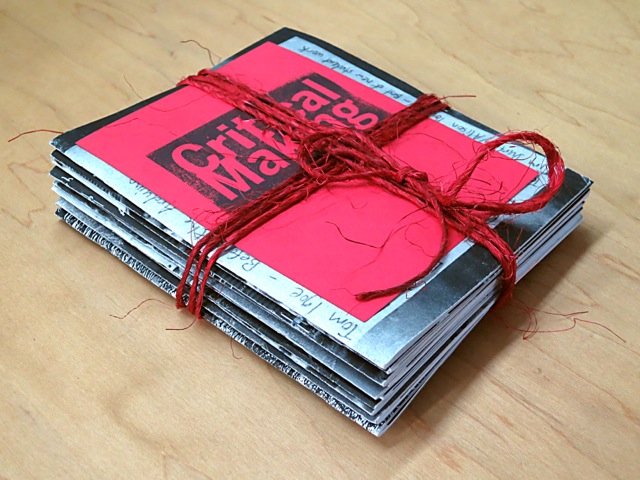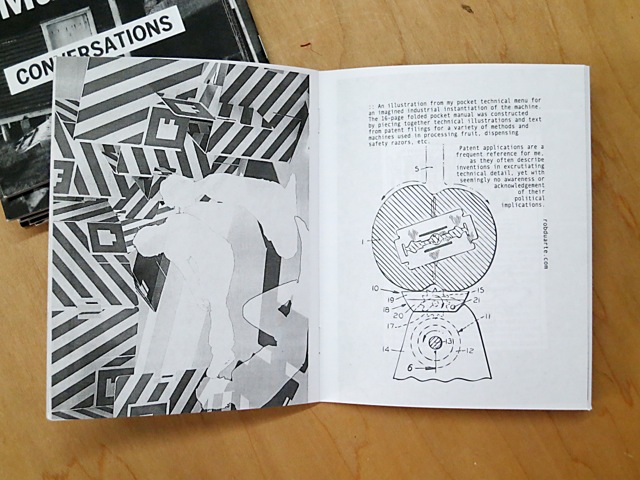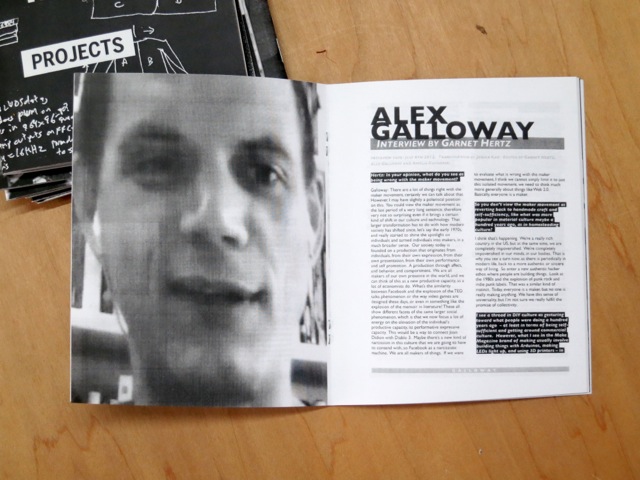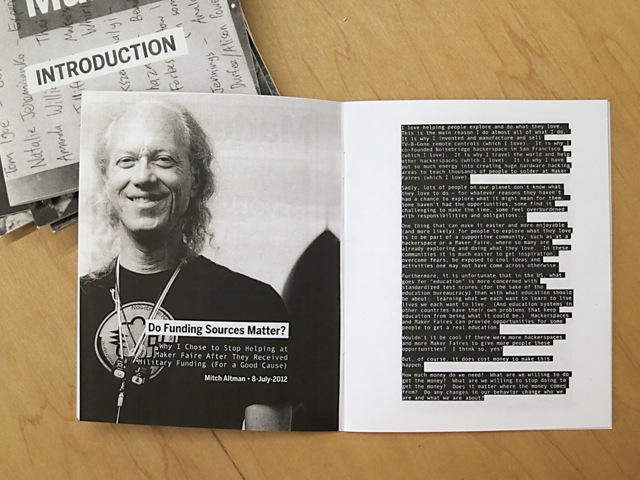I just untied my copy of Critical Making, edited by Garnet Hertz. When I pulled it from the hand addressed brown paper envelope I was startled by its handmade, twine-wrapped beauty. It has the spirit of an old school zine, with whole sections photocopied from other texts, and hand trimmed edges with few, if any, 90 degree corners. There are 10 hand-stapled black and white xeroxed booklets, clearly laid out on a computer, but with no page numbers, and lots of appropriately unattributed images. Each booklet focuses on a different aspect of DIY culture, including booklets for with texts on manifestoes, project descriptions, the role of place, and the importance of childhood. I am describing it in some detail because the book is not available online. This is notable, given the subject matter.
In his introduction, Hertz frames the project as a response to the conversation between publisher and king-of-nerds Tim O’Reilly and utopian hacker Mitch Altman, when the latter withdrew from the former’s Maker Faires, after they accepted DARPA funding. That sounds like it could be a he said, he said insider affair, but taking Make Magazine‘s apolitical brand of “Maker Culture” to task is important, as it has quickly become synonymous with DIY, hackerspaces, and hardware hacker culture, though they are not one-and-the-same. Part of this re-politicization project is achieved in the Conversations booklet, where Hertz interviews Matt Ratto, Natalie Jeremijenko, Alex Galloway, and Phoebe Sengers. Framing the project as a zine allows the text to include much shorter and simpler but no less important contributions, such as the page with Mark Pauline’s spread with six photos and short quote about how Survival Research Labs was “banned” from Maker Faires after one of their trademark performances where their bespoke machines blow fire and destroy things. In addition to Altman’s statement, and Dale Dougherty’s response, I particularly liked McKenzie Wark’s comparison of the Maker Fair in Queens, NY to Brooklyn’s artisanal culture, as a way of foregrounding the imperfections of both.
Though the text does not claim to be a compendium of the field, by including so many major contributors, it ends up feeling that way. Given that encyclopedic vibe, there are some notable absences: I would have liked to see something about the XBOX Kinect scene, and the potential lessons from working with, as opposed to against Microsoft; Theo Watson, Kyle McDonald, James George, and Jonathan Minard are the key players here, with Golan Levin as facilitator. And while Golan has one page documenting a project he did for F.A.T. Lab, it would be great to have something more substantial from him here. Although DIYbio is included, it would have been nice to include Critical Art Ensemble, even if only through a Xerox of one of their “freely pirateable” books. Lastly, though there were some great glimpses at critical making in other cultures, I was left wishing that someone would address the gender gap.
Hertz’s introduction returns repeatedly to a question he received from Geert Lovink: what is the point of printing, binding and making this book by hand? He spends the next few pages directly and indirectly justifying the handmade work. When Hertz sent me this copy he mentioned that this was one of the last left from this handmade edition of 300. If there are plans to print a larger run, I wonder how much of the original aesthetic can and will be preserved.





